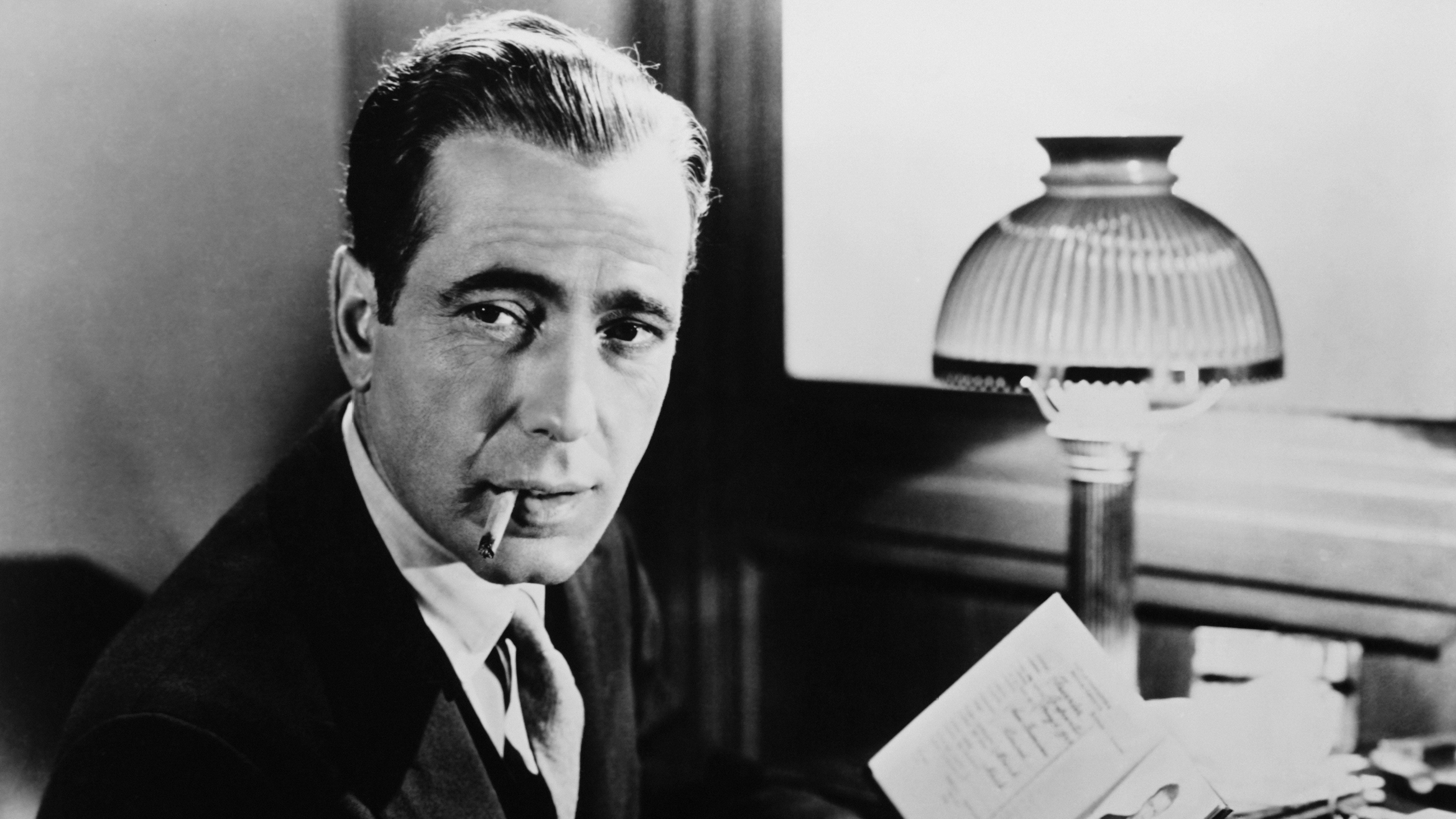Chasing a lead in The Big Sleep (1946), Humphrey Bogart briefly abandons the hardboiled exterior of P.I. Philip Marlowe and goes undercover as an effete book collector. With Marlowe masked only by sunglasses and an upturned fedora brim, it’s a bit like watching a cactus pretend to be a chrysanthemum. But the cactus is having a ball.
Bogart’s playfulness in that scene from Howard Hawks’ classic noir gestures at the wit of an actor who knows full well he’s also playing dress-up as Marlowe. Sparring through Raymond Chandler dialogue (by way of William Faulkner and two other screenwriters) and burning up the screen with Lauren Bacall (to whom he was newly married), Bogart refines and toys with his persona, evolving the noir bona fides he had cemented five years earlier as Sam Spade in The Maltese Falcon (1941).
Screening Oct. 8, The Big Sleep is the next Bogart title in Cinema 21′s fall series dedicated to the actor, followed by The Treasure of the Sierra Madre (1948) on Oct. 15 and In a Lonely Place (1950) on Oct. 22.
“I don’t think I can overestimate the impact Bogart has had on cinema in general and the entire film noir movement specifically,” says series programmer Elliot Lavine. “[Bogart] wasn’t simply satisfied with limiting himself to a singular persona…[he] would ultimately reveal more of a vulnerable and explosive personality than other actors might feel comfortable doing.”
Named the greatest male star of classic American cinema by the American Film Institute in 1999, Bogart could play symphonies of anger, despondence and covetousness, all within a half-octave of acting range. That’s in part due to his unique physical presentation: sad, pitted eyes, lips always slightly parted (all the quicker to return a barb or stick a cigarette between) and a voice that gained abrasion, but not necessarily volume, when the drama intensified.
Like most Raymond Chandler adaptations, The Big Sleep winds through a knotty plot that hardly matters once Marlowe reaches an investigative flow state of door-knocking and verbal fireworks. Among two dozen memorable quips, Marlowe boasts that he gets paid to take chances, an apt reminder of Bogart’s own prerogative as he aged—considering he found stardom past 40 and died just 15 years later.
After The Big Sleep, he excelled at playing men living life out over their skis while never losing grip of his own appealing Bogey grit. Even as he pitches his menace to towering heights in The Treasure of the Sierra Madre, it’s never forced. In John Huston’s classic parable of greed, he imbues gold prospector Fred C. Dobbs with a proto-Nicholson ferality, baring his teeth like a rabid dog once the temptation of wealth becomes irresistible. He still sounds like Humphrey Bogart and delivers lines like Humphrey Bogart, but Dobbs daringly blurs the line between antihero and hateful antagonist.
Two years later, In a Lonely Place (directed by Nicholas Ray) finds Bogart continuing his chance-taking character work. In this rug-pulling amalgam of crime and romantic drama, Bogart plays Dix Steele, a boozy, struggling screenwriter who winds up becoming a murder suspect. Though the allegation seems far-fetched initially, the film gradually and deliberately reveals Dix’s unpredictable anger and disquieting fascination with the crime of which he’s accused.
Bogart specifically taps into his Sierra Madre mania in a scene where Dix narrates the victim’s strangulation with bloodthirsty focus. There’s the excuse of his screenwriter’s imagination acting as a slight shield, but director Ray ratchets up interrogation lighting on Bogart’s gnarled visage, while the actor lustily monologues. If Dix isn’t confessing to the crime, he’s confessing to being a man capable of it.
Herein lies one of Bogart’s superpowers: understanding his own stardom keenly enough to create fascinating friction between persona and performance. At a time when the studio system operated at its most systematic, Bogart leveraged the unexpected against the inevitable—be it a costume gag or an inner torment—behind a face and bravado that didn’t just fit a movie-star archetype. It minted one.
SEE IT: Bogart on the Big Screen plays at Cinema 21, 616 NW 21st Ave., 503-223-4515, cinema21.com. 11 am Saturdays, through Oct. 22. $8.
